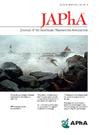Assessment of different intervention models to decrease no-show rates of embedded pharmacy visits
IF 2.5
4区 医学
Q3 PHARMACOLOGY & PHARMACY
Journal of the American Pharmacists Association
Pub Date : 2025-05-01
DOI:10.1016/j.japh.2025.102364
引用次数: 0
Abstract
Background
Clinical pharmacist practitioners (CPPs) are embedded in several Duke Primary Care (DPC) clinic locations. CPPs are able to independently modify medications and order labs within protocol in collaboration with a supervising physician. Patient no-shows for CPP appointments are costly to clinics. The purpose of this study was to determine the impact of 2 interventions on patient no-show rates for CPP appointments and to identify barriers patients may face that lead to no-shows.
Objective
Determine if the interventions were associated with a change in the no-show rate for embedded DPC CPP appointments.
Methods
Single-center, prospective, intervention study of no-show rates of DPC clinical pharmacist appointments. Appointments with patients under 18 years of age were excluded. Interventions were implemented between September 2023 and November 2023. The interventions consisted of a reminder message sent to the patient or a conversion of an in-person visit to a virtual visit if the patient was more than 5 minutes late. The intervention groups were compared to a control group from 1 year prior. A chi-square test was used to compare no-show rates.
Results
Total of 1645 appointments were included. The no-show rate was 20.4% in the control arm, 18.0% in the patient portal message arm, and 15.7% in the virtual arm. Average estimated financial loss per day due to no-shows was numerically lower in the intervention groups compared to the control group.
Conclusion
The 2 intervention groups experienced numerically lower no-show rates in comparison to the control, but the differences were not statistically significant. We were not able to identify specific patient barriers that were associated with increased likelihood to no-show. More studies are needed to further evaluate the impact of these interventions. Next steps involve the feasibility and implementation of these interventions into clinic workflow on a long-term basis.
不同干预模式对降低嵌入式药房就诊失诊率的评估。
背景:临床药师从业人员(CPPs)嵌入在几个杜克初级保健(DPC)诊所位置。cps能够与监督医生合作,在协议范围内独立修改药物和订购实验室。病人缺席CPP预约对诊所来说代价高昂。本研究的目的是确定两种干预措施对CPP预约患者不赴约率的影响,并确定患者可能面临的导致不赴约的障碍。目的:确定干预措施是否与嵌入式DPC CPP预约的缺勤率变化有关。方法:单中心、前瞻性、干预研究DPC临床药师预约失约率。排除了18岁以下患者的预约。干预措施在2023年9月至2023年11月期间实施。干预措施包括向患者发送提醒信息,或者如果患者迟到超过五分钟,将亲自就诊转换为虚拟就诊。干预组与一年前的对照组进行比较。卡方检验用于比较缺席率。结果:共纳入1645例预约。对照组缺席率为20.4%,患者门户信息组为18.0%,虚拟组为15.7%。与对照组相比,干预组每天因缺席而造成的平均估计经济损失在数字上更低。结论:与对照组相比,两个干预组的缺席率在数值上较低,但差异无统计学意义。我们无法确定具体的患者障碍与不来的可能性增加有关。需要更多的研究来进一步评估这些干预措施的影响。下一步是在临床工作流程中长期实施这些干预措施的可行性和实施。
本文章由计算机程序翻译,如有差异,请以英文原文为准。
求助全文
约1分钟内获得全文
求助全文
来源期刊
CiteScore
3.30
自引率
14.30%
发文量
336
审稿时长
46 days
期刊介绍:
The Journal of the American Pharmacists Association is the official peer-reviewed journal of the American Pharmacists Association (APhA), providing information on pharmaceutical care, drug therapy, diseases and other health issues, trends in pharmacy practice and therapeutics, informed opinion, and original research. JAPhA publishes original research, reviews, experiences, and opinion articles that link science to contemporary pharmacy practice to improve patient care.

 求助内容:
求助内容: 应助结果提醒方式:
应助结果提醒方式:


